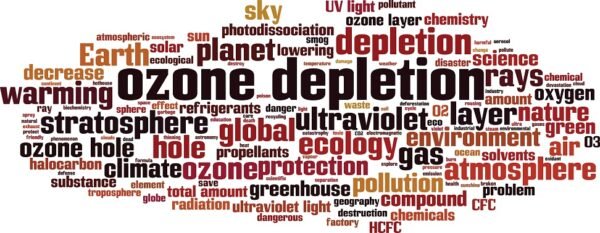On April 9, 2025, China’s Ministry of Ecology and Environment announced a national implementation plan on fulfilling the Montreal Protocol on Substances That Deplete the Ozone Layer during the 2025-2030 period. The implementation plan came into effect immediately. It lists controlled ozone-depleting substances (ODSs), explains the classification of their uses, and introduces measures to control them more effectively. Here is an overview of the program.
Measures for at-source ODS control
- Strictly regulate the production and sale of controlled substances.
- Implement quota systems that allocate quotas of production and use of controlled substances to producers of controlled substances for controlled uses, producers of controlled substances for exempted controlled uses, and producers using controlled substances as raw materials.
- Implement the requirement that sellers make notifications to the authorities to sell controlled substances and require the sellers to sell them in accordance with the regulations based on the classification of their uses.
- Step up the control of by-product controlled substances, while requiring producers to generate large quantities of such by-products to install automated monitoring systems.
Measures for use-phase ODS control
- Strictly regulate the use of controlled substances.
- Implement quota systems or the notification requirement for controlled uses of HCFCs and HFCs.
- Provide clear schedules for the phase-out of HCFCs and HFCs in each industry.
- Ban the use of HCFCs as blowing agents, solvents or cleaning agents from July 1, 2026 in the polyurethane foam, extruded polystyrene foam and industrial cleaning industries.
- In other industries, eliminate the controlled uses of HCFCs by 2030.
- In the automotive industry, ban the use of refrigerants with a global warming potential (GWP) higher than 150 in the air conditioning systems of M1 vehicles approved on or after July 1, 2029.
- Encourage research, development and application of alternative technologies using natural refrigerants in the automotive, home appliance, industry and cold chain logistics sectors.
Measures for end-of-life ODS control
- Implement the notification requirement for businesses that repair, collect, recycle or dispose of refrigeration equipment, refrigeration systems or firefighting systems containing controlled substances, while setting a clear scope for the requirement and establishing relevant data reporting requirements.
- Improve technology for repairing refrigeration equipment.
- Improve refrigerant recovery and recycling levels.
- Build management systems for the traceability and distribution channels of recycled refrigerants.
Measures for import and export control and foreign trade risks
- Implement quota systems for the import and export of controlled substances.
- Strictly control export and import license issuance.
- Prohibit the import of HCFCs and nationally banned controlled substances except for exempted uses, including use as raw materials.
Full details of the program (in Chinese) are available at
https://www.mee.gov.cn/xxgk2018/xxgk/xxgk03/202504/t20250423_1117396.html
 China launches national implementation plan on fulfilling the Montreal Protocol on Substances That Deplete the Ozone Layer
China launches national implementation plan on fulfilling the Montreal Protocol on Substances That Deplete the Ozone Layer 

























